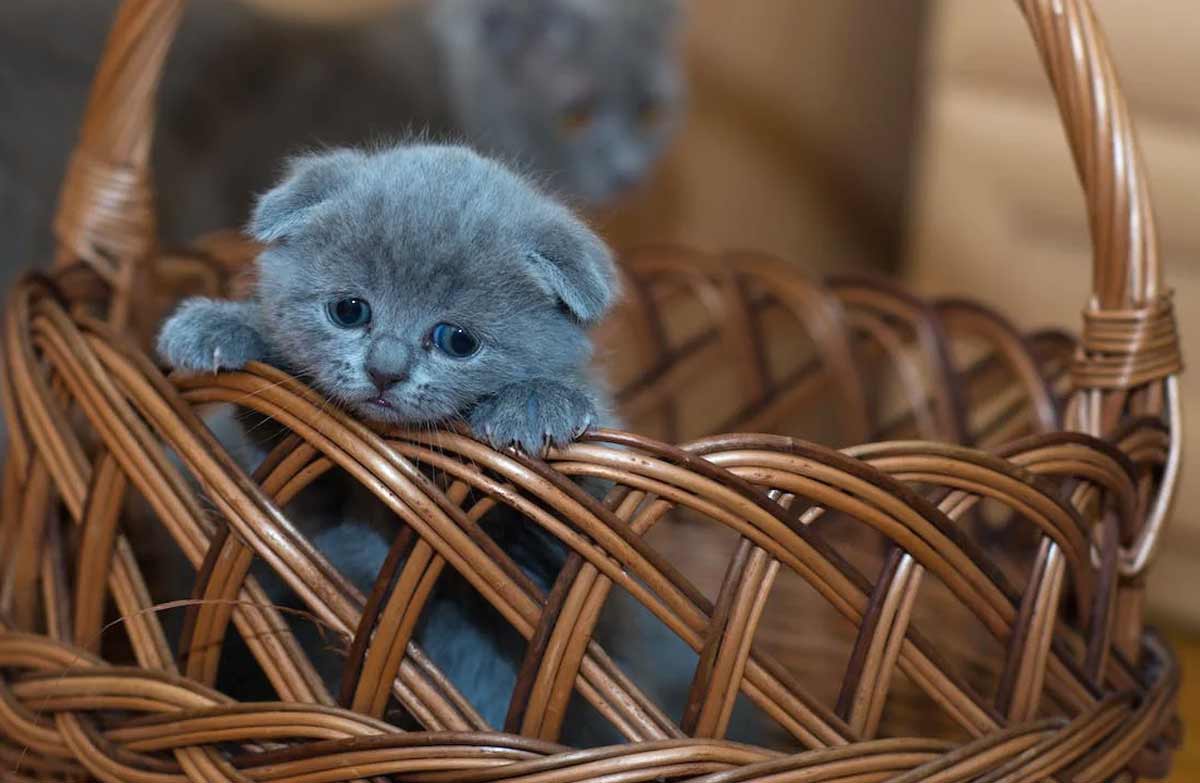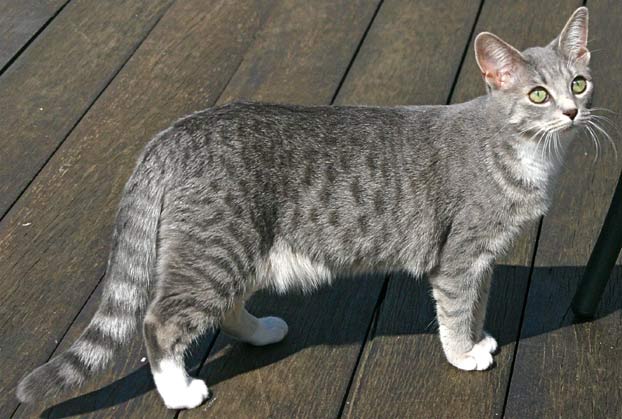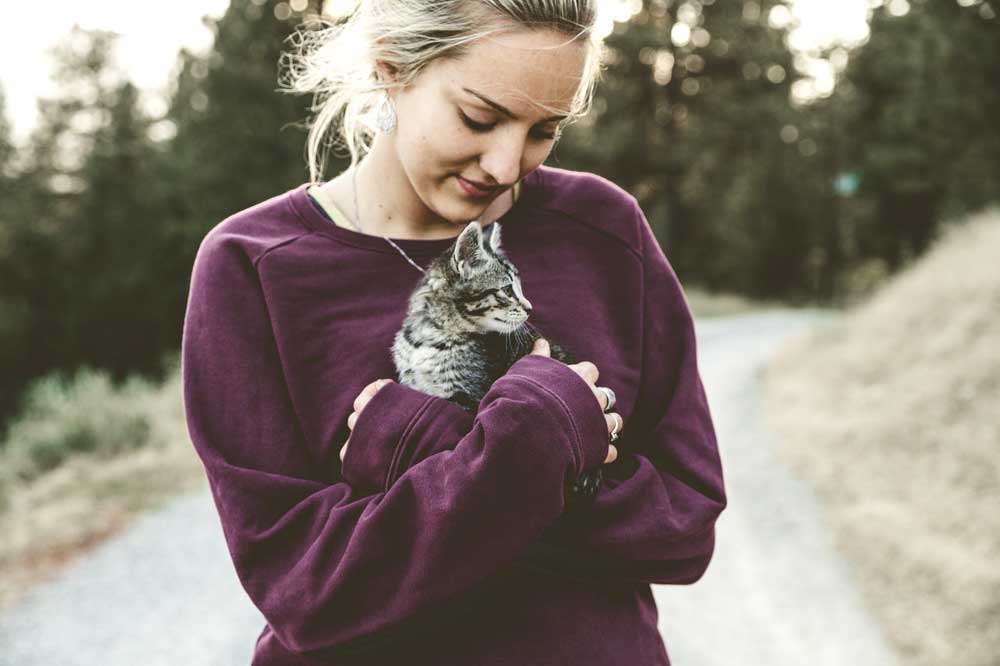How to take care of a kitten 2 months old? In the delicate symphony of life, the entrance of a 2-month-old kitten is akin to the crescendo of a heartwarming melody. Picture a miniature whirlwind of needle-sharp paws and boundless curiosity, tumbling headfirst into your life. That’s the arrival of a 2-month-old kitten – a ball of adorable fluff with eyes wide with wonder and purrs vibrating like miniature engines. But beneath the cuteness lies a world of rapid development, unique needs, and challenges that beg for understanding and care. This guide will be your compass, navigating the thrilling journey of nurturing a 2-month-old kitten into a confident, well-adjusted feline companion. Keep reading.
Developmental Leap
At this crucial stage, kittens are on a rollercoaster of growth. Their bodies, once wobbly and clumsy, start gaining coordination and agility. Their senses – sight, smell, and hearing – sharpen, opening a world of exciting stimuli. Playfulness blooms like a flower, fueled by an insatiable curiosity and a burning desire to explore. Understanding these leaps helps us appreciate their clumsiness as a necessary part of learning and provides the safe, stimulating environment they need to thrive.
Sensory Awakening
Imagine the world through a kaleidoscope of vibrant colors, amplified scents, and the intriguing thrum of sounds. Every sight, every smell, every rustle becomes an adventure for your kitten. Provide them with visual stimulation through colorful toys and window perches. Delight their sense of smell with catnip-filled mice and explore safe, fragrant herbs together. Let them chase the crinkle of paper or the playful chirping of a toy bird, awakening their auditory senses. These sensory experiences are the building blocks of their understanding of the world.
Socialization Superhighway
Early socialization is like laying the bricks for a sturdy bridge between your kitten and the world. Positive interactions with humans and other pets during this sensitive period shape their personality and future relationships. Introduce them to new people and animals gradually, allowing them to approach at their own pace. Reward calm interactions with treats and playful cuddles, building trust and confidence. This early exposure becomes the foundation for a future filled with purrs and companionship, not hisses and fear.
Fueling Tiny Engines: Nutrition for Growth and Play
Weaning Whispers
Around two months, those adorable milk meows begin to be replaced by the crunching of kibble. Weaning, the switch from mother’s milk to solid food, marks a milestone in their development. Consult your veterinarian to decide between formula, wet food, or dry kibble, each offering its benefits. Experiment to find what suits your kitten’s preferences, ensuring a smooth transition and a consistent, nutritious diet.
Feeding Schedule Finesse
Think of growing kittens like tiny engines; they need frequent refueling to fuel their boundless energy and rapid development. Aim for four to six small meals throughout the day, with wet food offered more often for hydration. As they mature, gradually increase portion sizes and decrease feeding frequency, tailoring the schedule to their age and activity level. Consistency is key; regular mealtimes provide comfort and predictability, helping your kitten thrive.
Hydration Havens
Fresh water is just as crucial as food for your kitten’s health. Place water bowls away from litter boxes and food areas, and consider a cat fountain to entice them to drink more. Don’t underestimate the power of fun: add catnip leaves or ice cubes to the water, making hydration a playful adventure. Remember, proper hydration keeps those tiny kidneys purring and prevents urinary tract issues.
Treats and Temptations
Responsible treat-giving is an art. Opt for healthy, kitten-specific treats, avoiding human food scraps high in fat, sugar, and potentially harmful ingredients. Use treats sparingly, as training rewards or positive reinforcement tools, not substitutes for a balanced diet. Remember, even healthy treats can contribute to weight gain, so stick to small portions and adjust your kitten’s regular meals accordingly.
Crafting a Kitten Kingdom: Creating a Safe and Stimulating Environment
Kitten-Proofing Your Castle
Think like a tiny, inquisitive explorer with sharp claws and boundless curiosity. Secure electrical cords, tuck away loose wires, and put breakable treasures out of reach. Invest in childproof latches and baby gates to restrict access to off-limit areas. Remember, houseplants can be toxic to cats, so keep them well beyond reach. By kitten-proofing your home, you provide a haven for exploration and minimize potential accidents.
Cozy Corners and Climbing Havens
Remember, vertical territory is precious for cats. Place shelves or perches at windowsills, allowing them to observe the world while basking in the sunshine. A cardboard box with a cozy blanket can become a temporary haven, offering security and a perfect napping spot. By providing designated spaces for lounging and climbing, you cater to their natural instincts and build their confidence.
Toy Box Treasures
Play is not just fun for kittens; it’s essential for their physical and mental development. Equip your toy box with age-appropriate treasures. Feather wands ignite their predatory instincts, while crinkly balls and stuffed mice encourage playful pounces. Don’t underestimate the power of DIY: homemade toys like cardboard boxes filled with treats or balls of yarn can spark endless amusement. Rotate toys regularly to maintain their novelty and keep your kitten engaged. Remember, playtime is your bond-building ritual, a time to connect, giggle, and witness the pure joy of a miniature feline discovering the world through play.
Litter Box Lessons
Litter box training might seem daunting, but with patience and consistency, your kitten will be a pro in no time. Choose a shallow box in a quiet, easily accessible location, away from high-traffic areas. Opt for clumping clay litter, easier to scoop and manage. Scoop the box at least once a day, more if necessary, and completely change the litter weekly. Remember, accidents happen, especially in the beginning. Avoid punishments, which can create negative associations. Gently guide your kitten to the box after meals or playtime, offering enthusiastic praise and treats for successful deposits. Be patient, celebrate every progress, and remember, consistency is key!
The Purrfect Playdates: Building Confidence through Socialization
Introducing Fellow Felines
Socialization isn’t limited to humans. Introducing your kitten to other cats can be a rewarding experience, but proceed with caution. Arrange supervised playdates with friendly adult cats or kittens of similar temperament. Ensure a neutral environment and allow them to approach at their own pace. Positive reinforcement with treats and playful interactions helps build trust and create lasting friendships. Remember, not all cats click, so respect their boundaries and don’t force interactions. Slow and controlled introductions pave the way for a future filled with purrs and playtime, not hissing and territorial battles.
Human Connections
Gentle handling and daily cuddle sessions are essential for building a strong bond with your kitten. Speak in a soft, soothing voice, avoiding loud noises or sudden movements. Let them initiate contact, rubbing against your leg or nuzzling your hand. Playful petting sessions and lap time help them get used to human touch and build trust. Remember, socialization isn’t just about fun; it’s about communication and understanding each other’s needs. By establishing gentle interactions early on, you lay the foundation for a lifelong, loving relationship.
Out and About
The world beyond your walls can be a fascinating, yet overwhelming, place for a young kitten. Expose them to new sights and sounds in a controlled, positive way. Secure harnesses and leashes allow for supervised walks in quiet gardens or outdoor enclosures. Short car rides, with proper safety measures, can become exciting adventures. Remember, always prioritize their safety and comfort. Start with brief outings and gradually extend the duration as their confidence grows. These controlled exposures broaden their horizons, reduce anxiety towards the unknown, and build bonds through shared experiences.
Tiny Troubles: Recognizing and Addressing Health Concerns
Common Kitten Ailments
Teething discomfort, digestive issues, and respiratory infections are common among kittens. Be aware of symptoms like excessive drooling, diarrhea, vomiting, or coughing. While most are mild and easily treatable, prompt veterinary attention is crucial. Don’t hesitate to contact your vet if you notice any changes in behavior, appetite, or activity level. Remember, preventative care is key; schedule regular checkups, vaccinations, and parasite control measures to ensure your kitten’s health and well-being.
Emergency Situations
Learn to distinguish between normal kitten antics and signs of serious illness or injury. Difficulty breathing, lethargy, pale gums, or abnormal discharge require immediate veterinary attention. Don’t delay; prompt action can be life-saving. Keep a list of emergency vet clinics and animal poison control hotlines readily available, prepared for any potential situation. Remember, your kitten’s health is your top priority, and seeking professional help ensures their safety and swift recovery.
:strip_icc()/eating-cat-985012686-5c413eec4cedfd00019396ff.jpg)
Beyond the Adorable Meows: Building a Long-Term Partnership
Preparing for the Future
Spaying/neutering at the appropriate age prevents unwanted litters, minimizes health risks, and contributes to a calmer, more well-adjusted feline companion. Consider microchipping your kitten for permanent identification, ensuring their safe return if they ever get lost. Pet insurance can offer peace of mind, covering unexpected veterinary expenses and providing financial security for your furry friend’s future. Remember, adopting a kitten is a long-term commitment. By prioritizing their health and well-being, you ensure a fulfilling life filled with purrs, playful antics, and unwavering companionship. RPM 3.0 – 60% CONVERSION & Money for Affiliate Marketing
Learning Through Love
Positive reinforcement training is the key to shaping your kitten’s behavior. Reward desired actions with treats, praise, and playful engagement. Ignore unwanted behaviors like scratching furniture, and redirecting their attention to scratching posts with gentle guidance. Remember, patience and consistency are your allies. Avoid punishments like yelling or hitting, which can damage trust and create fear. By prioritizing positive reinforcement, you cultivate a harmonious relationship built on mutual respect and understanding.
A Lifetime of Purrs
Raising a 2-month-old kitten is an adventure like no other. Witnessing their transformation from clumsy furballs to confident cats is a journey filled with heartwarming milestones and playful antics. Every purr, every cuddle, every playful pounce becomes a treasured memory, enriching your life with unconditional feline love. Remember, the rewards of responsible cat ownership are immeasurable. You provide a loving home, nurture their growth, and in return, receive a lifetime of purrs, companionship, and unwavering loyalty. See why thousands of cats love BoxCat
Troubleshooting Kittenhood
Picky Eating
Offer a variety of kitten-approved wet and dry food, making sure it’s age-appropriate and high-quality. Consult your veterinarian about potential reasons for pickiness, such as medical issues or environmental stressors. Encourage playful feeding with puzzle feeders or food toys, making mealtime engaging and stimulating. Remember, patience and experimentation are key to finding what suits your kitten’s preferences.
Excessive Meowing
Identify the reason behind the vocalizations. Is it hunger, boredom, or seeking attention? Address their needs accordingly, providing regular meals, engaging playtime, and plenty of cuddles. Ignore excessive meowing to avoid reinforcing the behavior. Create a consistent bedtime routine to minimize nighttime vocalizations. Remember, understanding the context of their meows helps you effectively address their needs. Cat accessories on Amazon
Scratching Behaviors
Provide ample scratching posts of different textures and heights, placing them in strategic locations like near furniture or doorways. Encourage their use with catnip or treats. Gently redirect scratching attempts to the designated posts and reward success with praise. Keep furniture protected with scratching deterrents like double-sided tape or citrus sprays. Remember, scratching is a natural feline behavior, and offering acceptable outlets prevents damage to your belongings.
Sleep Patterns
Kittens are notorious for napping throughout the day, interspersed with bursts of playful energy. Establish a consistent bedtime routine with calming activities and dim lighting. Provide them with a cozy bed in a quiet location. Avoid playtime before bed, as it can energize them. Remember, their sleep patterns will gradually mature as they grow older. By creating a peaceful bedtime environment, you encourage restful sleep and ensure they awaken refreshed and ready for playful adventures. How AI, ChatGPT maximizes earnings of many people in minutes
Bonus Tips
DIY Kitten Enrichment Ideas:
- Cardboard Box Maze: Cut tunnels and doorways in a large cardboard box, creating a playful obstacle course for your kitten to explore.
- DIY Food Puzzles: Recycle plastic containers or egg cartons by filling them with treats and kibble, encouraging problem-solving skills.
- Hanging Catnip Toys: Suspend catnip-filled toys from doorways or shelves, enticing playful jumps and batting practice.
Kitten Travel Tales:
- Secure carriers: Invest in a well-ventilated, comfortable carrier for car rides and vet visits. Motivation – Mind – Success – Thinking – Productivity – Happiness
- Familiarize with travel: Introduce your kitten to the carrier at home, making it a positive experience with treats and toys.
- Short, frequent stops: During long journeys, take regular breaks for bathroom breaks and playtime, minimizing stress and anxiety.
Reading the Feline Alphabet:
- Tail Fluff: A swishing tail indicates curiosity or excitement, while a puffed-up tail signifies fear or aggression.
- Ear Tilt: Perked ears show attentiveness, while flattened ears signal discomfort or fear.
- Body Language: A relaxed posture with sprawled legs demonstrates contentment, while a lowered body with an arched back and flattened ears points to fear or aggression.
- Vocalizations: A soft meow is often a request for attention or food, while a loud hiss signifies displeasure or a perceived threat. Guttural growls are a serious warning, best heeded with caution.
- Eyes: Wide, dilated pupils indicate playfulness or excitement, while narrowed eyes can signal anger or fear. Sudden eyelid flickers may express irritation or anxiety.
Purrfect Partners: Celebrating the Journey
Remember, raising a kitten isn’t just about caring for their needs; it’s about building a lifelong bond filled with love, laughter, and purrs. Cherish every messy paw print, every clumsy cuddle, and every playful pounce. Capture these precious moments in photos and videos, creating a heartwarming chronicle of your shared journey. Share your feline adventures with friends and family, spreading the joy of cat companionship. Business – Money Making – Marketing – E-commerce
Most importantly, embrace the unexpected. Kittens have a knack for turning ordinary moments into hilarious escapades. Be prepared for the shredded toilet paper, the overturned flowerpots, and the inexplicable fascination with dangling shoelaces. These “purrhapses” are not mishaps, but endearing quirks that add spice to your life.
As your kitten matures, the playful antics may evolve, but the bond you forge will only deepen. Witness their confidence blossom as they explore the world around them, their purrs becoming deeper, their meows more nuanced. Remember, you are not just their caregiver; you are their confidante, their playmate, and their source of unconditional love.
So, open your heart, open your home, and prepare to be captivated by the magic of a 2-month-old kitten. In return, you will receive a lifetime of purrs, playful companionship, and unwavering loyalty, enriching your life beyond measure. Welcome to the wonderful world of cat parenthood – a journey filled with joy, laughter, and unconditional love, one tiny paw print at a time. Health books, guides, exercises, habits, Diets, and more
DIY Kitten Enrichment Ideas
- Paper Bag Tunnel: Create a long tunnel by connecting several paper bags, offering a fun crawl-through adventure.
- Treat-Hiding Games: Hide treats in unexpected places (safe spots, of course!), encouraging your kitten’s natural investigative instincts.
- Bubble Bounces: Blow bubbles in a safe, enclosed space, watching your kitten curiously bat and chase them.
Kitten Travel Tales
- Familiarize with car sounds: Before embarking on long journeys, introduce your kitten to car noises at home by playing recordings or revving the engine briefly.
- Pack essentials: Bring familiar toys, water bowls, and their favorite food to minimize stress and ensure comfort during travel.
- Make it a positive experience: Reward calm behavior with treats and gentle praise, turning travel into a shared adventure. Fitness – Meditation – Diet – Weight Loss – Healthy Living – Yoga
Final thought
Raising a 2-month-old kitten is a whirlwind of tiny paws, boundless energy, and heartwarming moments. This guide has equipped you with the knowledge and resources to navigate this journey with confidence, nurturing your kitten into a well-adjusted, happy feline companion. Remember, providing a loving, stimulating environment, prioritizing their health and needs, and building a strong bond through positive reinforcement are the cornerstones of successful kittenhood. So, embrace the chaos, cherish the purrs, and prepare to witness the extraordinary transformation of a tiny ball of fluff into a playful, confident cat, forever enriching your life with unconditional feline love and heartwarming companionship.
Other Interesting Articles
- How To Take Care Of A Kitten: A Guide For New Pet Owners
- Why Do Cats Chirp? Major Reasons Behind This Cute Sound
- 10 Common Reasons Why Cats Suckle? How To Discourage
- 12 Reasons Why Cats Meow So Much: How To Mitigate
- 9 Common Reasons Why Cats Chirp or Chatter: 5 FAQs
- Cat Zoomies: Why Does A Cat Get Them? When to Call a Vet?
- Burmilla Cat Breed: Profile, Traits, Grooming, Health, Care
- Aegean Cat Breed: Profile, Traits, Grooming, Health, Care
- American Wirehair Cat Profile, Traits, Grooming, Health, Care
- American Shorthair Cat Profile, Traits, Grooming, Health, Care
- American Polydactyl Cat Profile, Traits, Grooming, Health, Care
- American Longhair: Profile, Traits, Grooming, Health, Care
- American Curl Cat Profile, Traits, Grooming, Health, Care
- Asian Semi-Longhair Cat Profile, Traits, Grooming, Health, Care
- California Spangled Cat: Profile, Traits, Grooming, Health, Care
- Burmilla Cat Breed: Profile, Traits, Grooming, Health, Care
- British Shorthair Cat: Profile, Traits, Grooming, Health, Care
- Brazilian Shorthair Cat: Profile, Traits, Grooming, Health, Care
- Bombay Cat Breed: Profile, Traits, Grooming, Health, Care
- British Longhair Cat: Profile, Traits, Grooming, Health, Care



